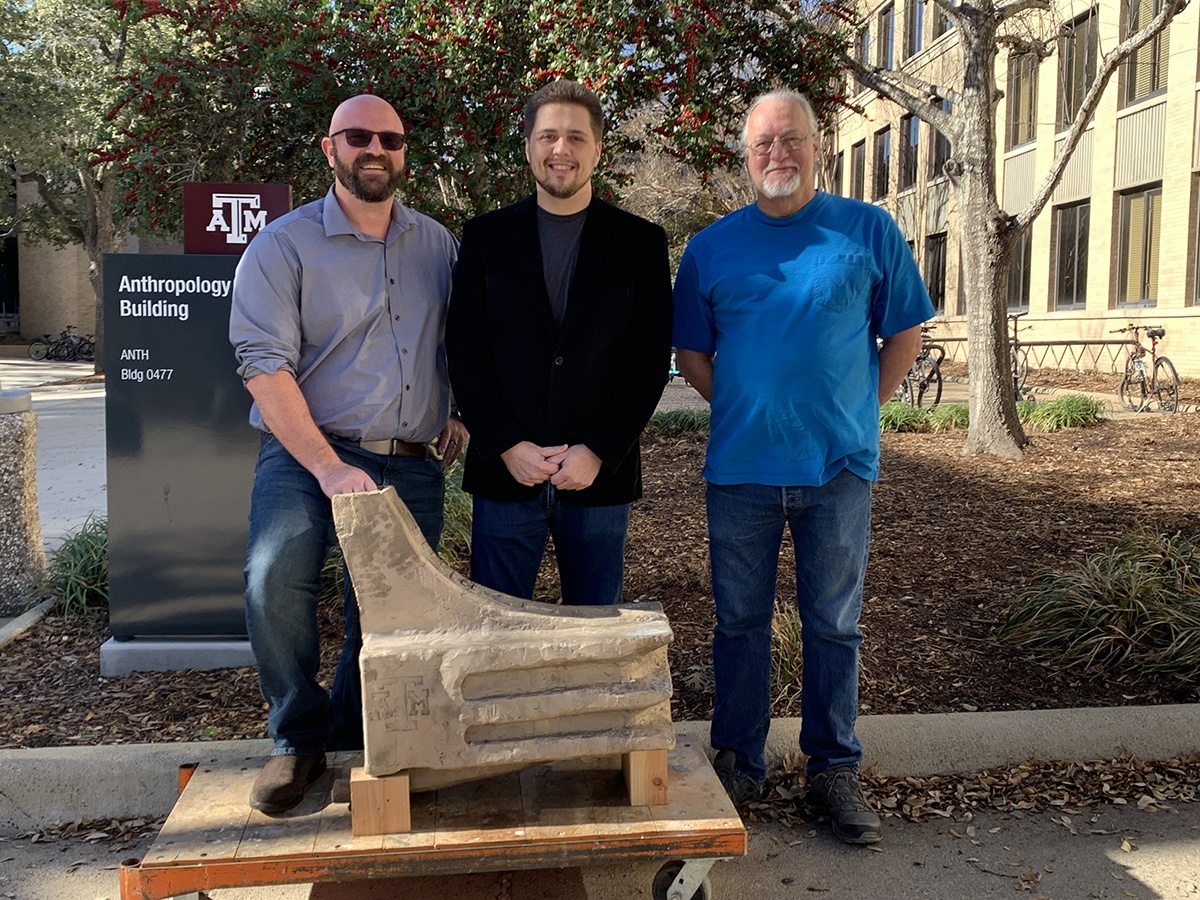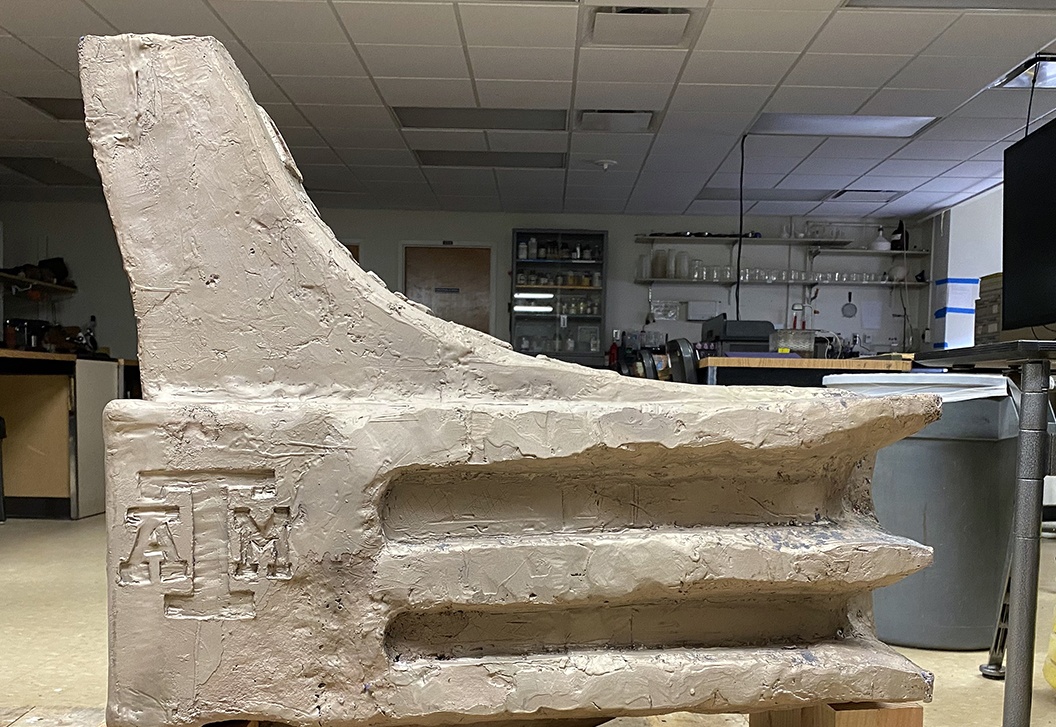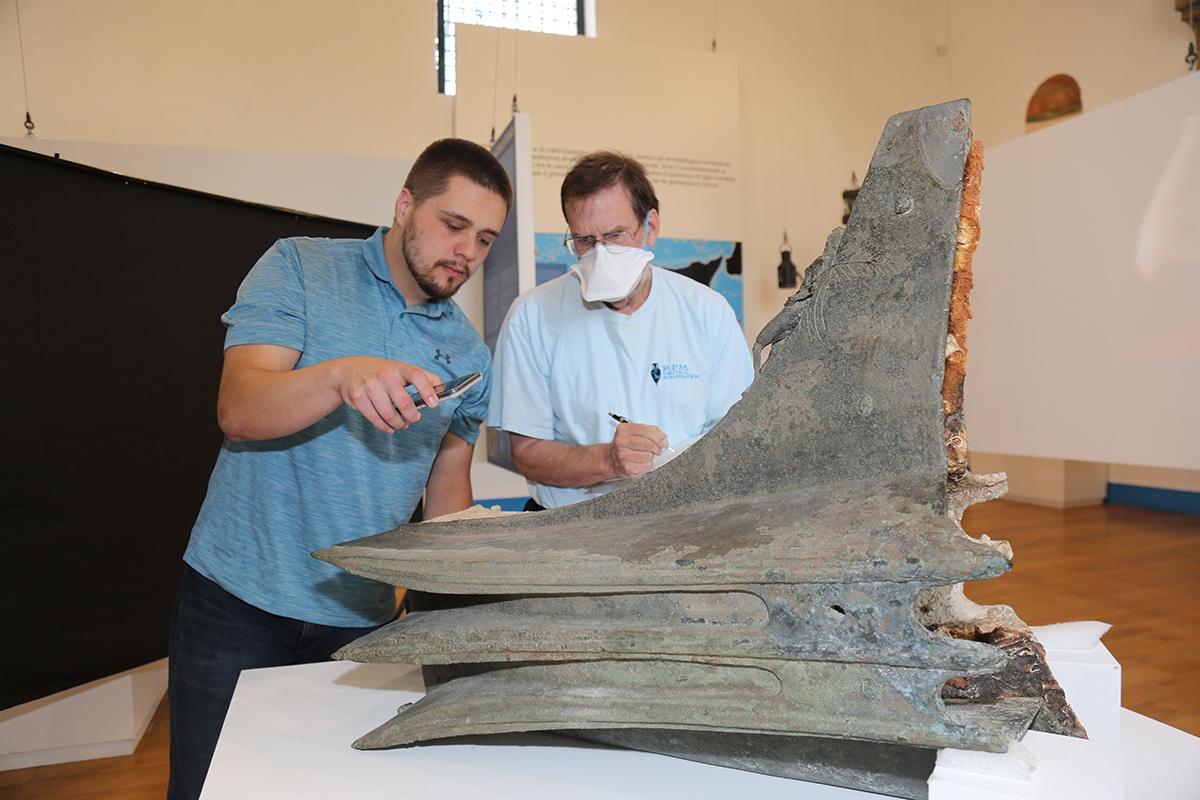News

Grad Student Explores Ancient Warfare With Naval Ram Project
By Lesley Henton, Texas A&M University Division of Marketing & Communications
When nautical archaeology graduate student Stephen DeCasien was invited by a colleague to be part of the Battle of the Egadi Islands Project, he was ecstatic. The site off the coast of western Sicily is the only known ancient naval battlefield ever discovered — nautical archaeologists have recovered 26 Roman and Carthaginian naval rams and other artifacts from a battle on the Mediterranean Sea that took place in 241 BCE during the First Punic War.
One of DeCasien’s research interests, naval rams are ancient bronze weapons that were fitted to the bows of Greek and Roman warships and used to ram holes into the hulls of enemy ships. Unfortunately for the New Jersey native, the invitation to the historic site came in fall 2019; before he could get to Sicily, the worldwide pandemic began and travel became impossible.
It was a sorely missed opportunity and he didn’t forget it.
An ‘Insane Idea’
Then in spring 2021, in a class led by Dr. Christopher Dostal, director of the Texas A&M University Conservation Research Laboratory (CRL) and the Center for Maritime Archaeology and Conservation (CMAC), DeCasien was learning about casting techniques and ways to conserve metal objects.
“I thought to myself, if I couldn’t see any rams due to COVID, maybe I could make my own,” he said. “I pitched my insane idea to Dr. Dostal with no proposal or plan on how we’d do it and without hesitation, Dostal replied, ‘Let’s do it!’”
Dostal, an assistant professor of nautical archaeology in the College of Arts and Sciences, specializes in historical-period maritime archaeology, the conservation and preservation of waterlogged artifacts, and digital imaging and 3D modeling of archaeological artifacts.
“It was a pretty bold idea,” Dostal said. “Stephen was in my Conservation II course and we were experimenting with a version of lost-wax casting that uses 3D printing instead of silicone molding when he had the idea to do one on a grand scale.”
Lost-wax casting is a process whereby a bronze metal sculpture is cast from a clay, wax or wooden mold. The practice dates back more than 5,000 years, and had developed independently in several regions.
“At our lab, the things we cast are almost always smaller than a deck of cards so I thought, ‘If we do this, where are we going to cast it?’” Dostal said. “And how are we going to pay for it?”
The latter turned out to be fairly easy. “I’m lucky enough to hold the Institute of Nautical Archaeology Faculty Fellowship, which allowed me to help fund this project,” Dostal said. “I told Stephen I was into the idea, but he should know that he was taking on a huge project. To his credit, this was a passion project and he put in a lot of work. There are many things we don’t know about the construction of ancient rams, and sometimes we simply have to learn by doing.”

The Process
DeCasien, with support from Dostal and Glenn Grieco, director of the CMAC Ship Model Laboratory, followed a three-step process to create the ram. First, he constructed a wooden ship bow to serve as the beeswax model’s core; second, he created the beeswax model; and third was the lost-wax casting which was done at Pyrology Foundry and Studio in Bastrop, Texas.
“The foundry used a similar method to the one used in antiquity,” DeCasien said. “Several channels were added to the beeswax model to allow the molten bronze to be poured in for casting. The model was placed in a casting slurry which created a protective shell around it. This shell was heated to melt the beeswax out, leaving the shell empty with the channels still intact. Molten bronze was poured in the shell filling the areas where beeswax once was. The bronze was allowed to cool and then the shell was broken open leaving an exact replica of the beeswax model in bronze behind.”
The result is the first new naval ram made using ancient techniques in more than 1,500 years. It was so notable, Popular Mechanics published an article about it earlier this year.
And like any good Ag would do, DeCasien stamped the ram with the Texas A&M mark.
The project gave the researchers more insight into the lives of ancient peoples, DeCasien said, noting it’s safe to assume that naval rams were likely expensive, time consuming to build, and crafted to the highest standards in antiquity. “The reconstructed ram also reinforced the notion that naval rams were part of an ‘industrialized’ weapon system,” he said. “It tells us more about the socioeconomic implications of building ancient navies and the ways in which peoples living around the ancient Mediterranean basin conducted naval warfare.”

A Second Chance At Sicily
In summer 2022, another opportunity arose for DeCasien to study those 2,000-year-old naval rams lifted from the Mediterranean sea floor. He spent a month in Sicily, working as a member of the RPM Nautical Foundation team under the supervision of the Soprintendenza del Mare, the region’s department of cultural heritage and identity.Once he earns his doctorate, DeCasien said he plans to be a researcher and teacher. “I hope to find an academic job where I can share my passion of ancient Greek and Roman maritime history with other enthusiastic scholars and students, as well as continue my research on ancient naval warfare,” he said, noting the ram project couldn’t have been done anywhere else but A&M.
“Our professors and graduate students are driven to change how scholars and the general public view the human past through archaeological discoveries and teaching. This type of project would have been impossible anywhere else as housed in our department we have some of the foremost scholars in pre-classical and classical seafaring, shipbuilding techniques, conservation, and the reconstruction of ships.”
Story originially appeared on Texas A&M Today. Read here: https://today.tamu.edu/2023/03/16/grad-student-explores-ancient-warfare-with-naval-ram-project/